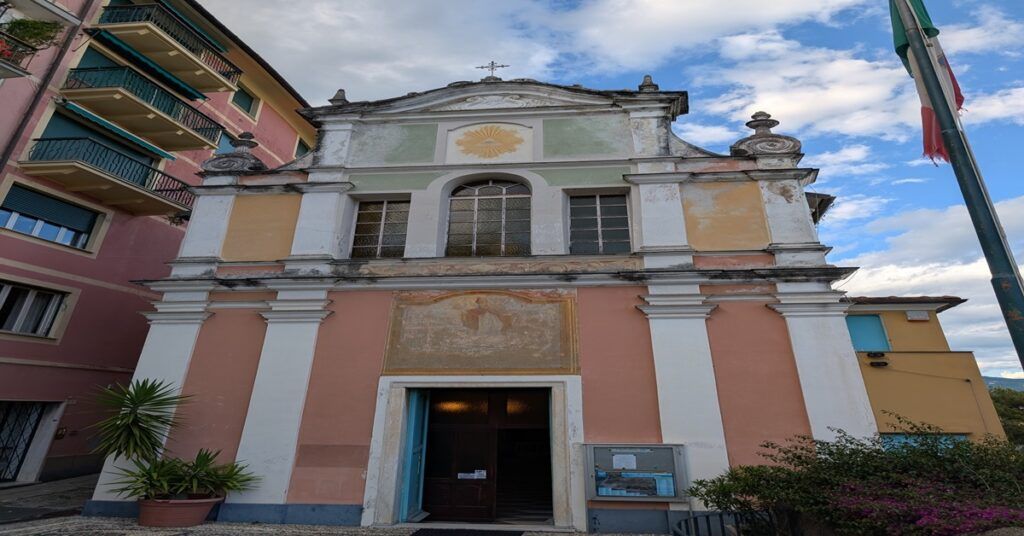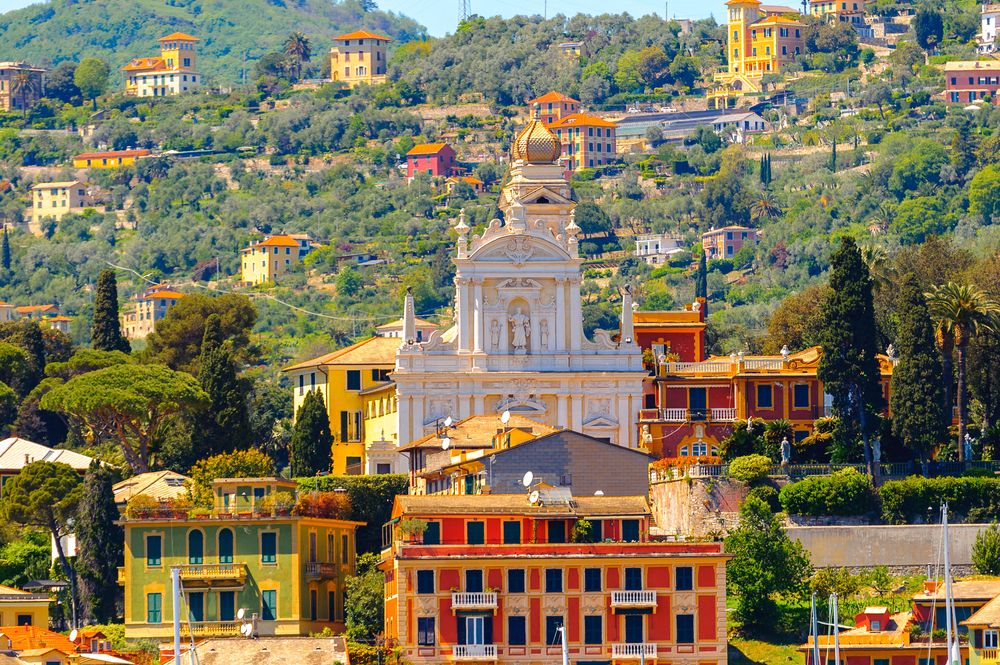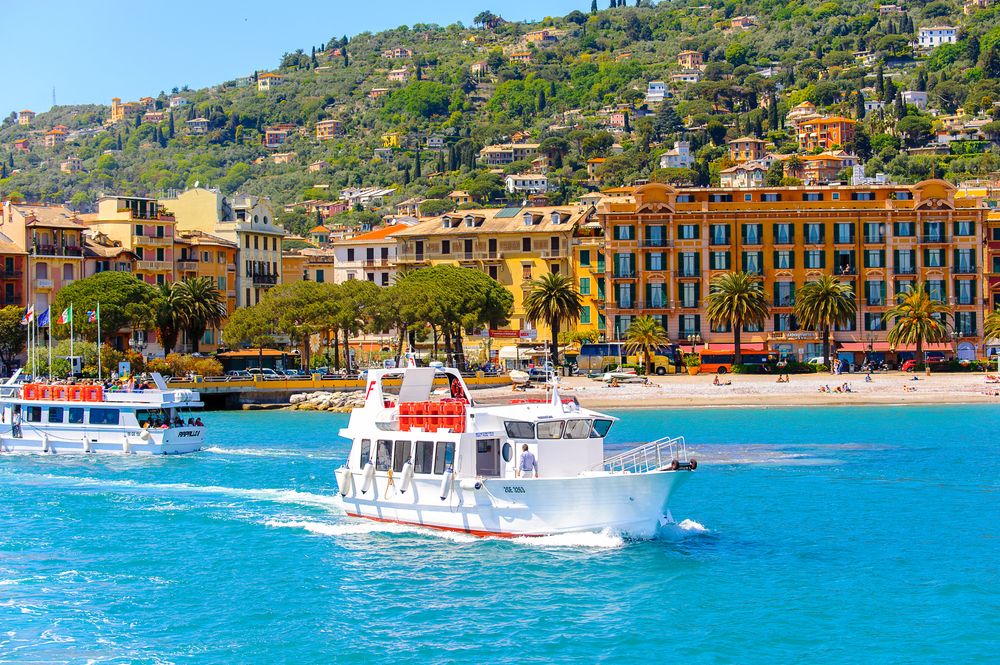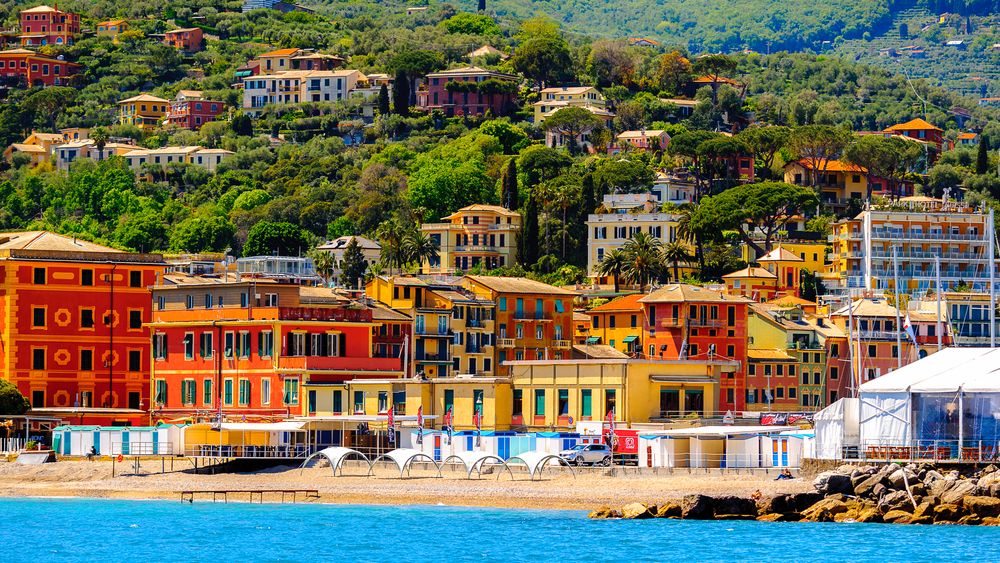Tucked away on what used to be a rocky outcrop in the sea, the Oratorio di Sant’Erasmo feels like a living piece of Santa Margherita Ligure’s past. This beautiful church goes all the way back to 1347, when local sailors built a chapel dedicated to Saint Erasmus, patron saint of seafarers and fishermen. Over the years, the building changed, but it never lost its spiritual importance to people living along the coast.
The oratorio’s Baroque façade really catches your eye as it stretches upward along Via Luciano Manara. Step inside and you’ll notice its single-nave layout in the same Baroque style. Beyond religious services, the church has always played a big part in daily life—offering charity, caring for the sick, and helping out those in need.
Find available hotels and vacation homes instantly. No fees, best rates guaranteed!
Check Availability Now
If you find yourself in Santa Margherita Ligure, this oratorio isn’t just about pretty architecture; it’s a window into the town’s deep bond with the sea. Locals and travelers alike come here for religious functions and to soak up a bit of authentic Italian coastal tradition.
Historical Significance of the Oratorio di Sant’Erasmo

The Oratorio di Sant’Erasmo stands out as a key piece of Santa Margherita Ligure’s history, tying the community to its maritime roots and religious customs since the 1300s.
Origins and Founding
Local fishermen from the borgo of Corte built the Oratorio di Sant’Erasmo in 1347. They picked a dramatic spot—right on a rocky ledge at the foot of San Giacomo hill, where storms would send waves crashing up against its walls. They definitely didn’t choose this spot by chance.
These fishermen wanted a sacred place right between themselves and the wild sea they faced every day. The original oratorio was much simpler than what you see now.
As time passed, the building saw several makeovers and additions. The elegant Baroque façade, with its sweeping lines, came later and turned the modest chapel into the oratorio you can visit today.
Sant’Erasmo: Life and Legacy
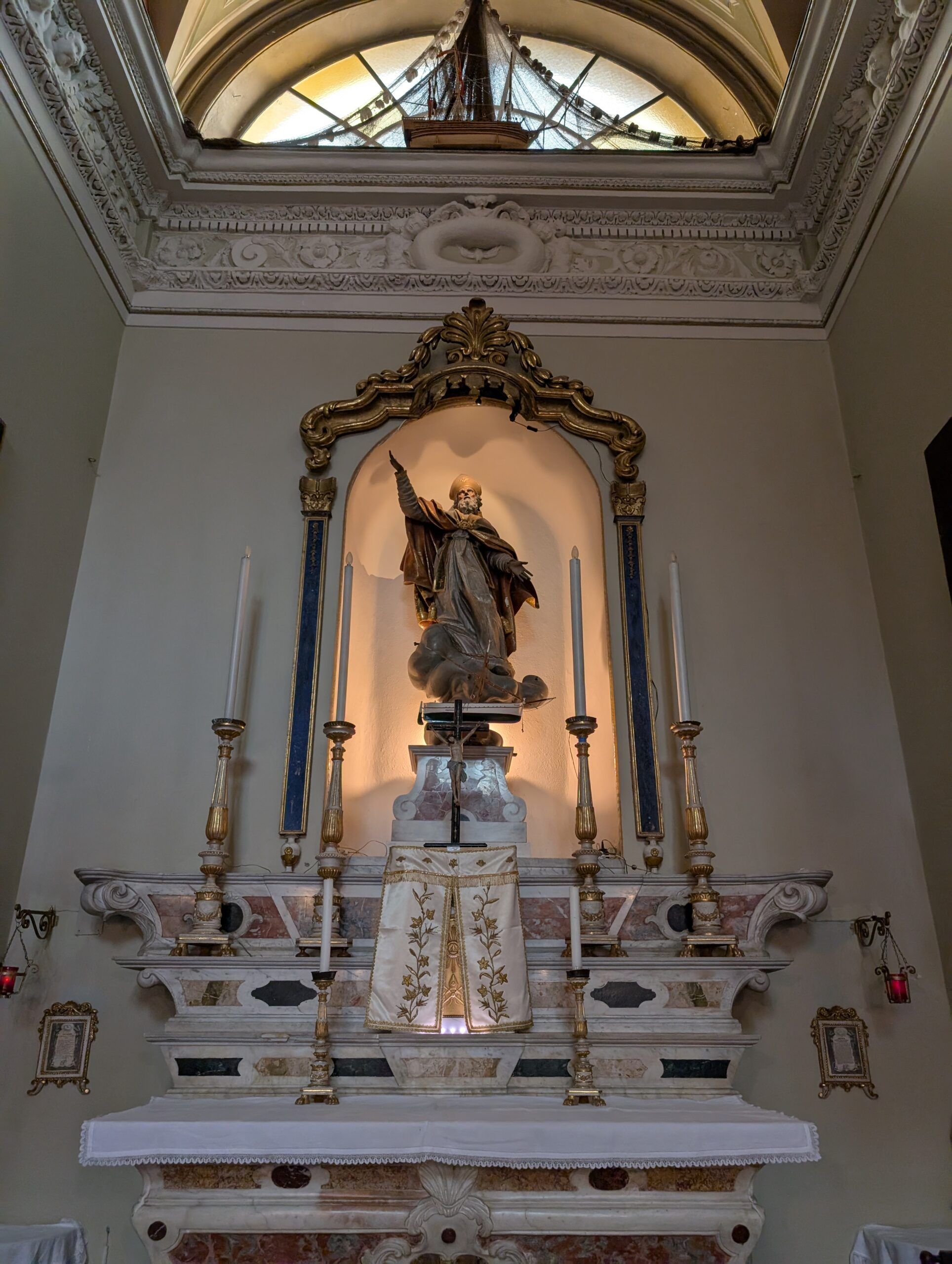
Sant’Erasmo (Saint Erasmus), or Sant’Elmo, was a bishop and martyr from the late 3rd century. He suffered torture and was killed during Emperor Diocletian’s persecutions around 303 CE.
He served as Bishop of Antioch and kept his faith even under brutal persecution. Early Christians, especially those in risky jobs, drew inspiration from his courage.
People started linking the saint to “St. Elmo’s fire”—that odd blue glow that sometimes appears on ships in a thunderstorm. Sailors saw this as a sign that their patron saint was watching over them.
For Ligurians, who’ve always lived by the sea, Sant’Erasmo became a symbol of protection. His feast day falls on June 2nd, and coastal communities mark it with special devotions.
Role in the Maritime Community
The oratorio became more than just a church—it turned into the spiritual heart of Santa Margherita’s fishing community. Fishermen would pray here before heading out and come back to give thanks after a safe return. This back-and-forth built strong community ties and gave comfort to those braving the sea.
In 1798, during the chaos of the Ligurian Republic, the government ordered churches and oratories to hand over valuable objects. The oratorio lost many treasures in that period.
Despite these setbacks, the Oratorio di Sant’Erasmo still stands as a symbol of resilience for the town’s seafaring folk. Even now, you’ll see how tightly the oratorio and local fishing traditions are woven together.
Architectural Features of the Oratory
The Oratorio di Sant’Erasmo shows off some pretty impressive architecture, blending maritime history with Baroque flair. Its design draws visitors in and sets a peaceful, spiritual mood.
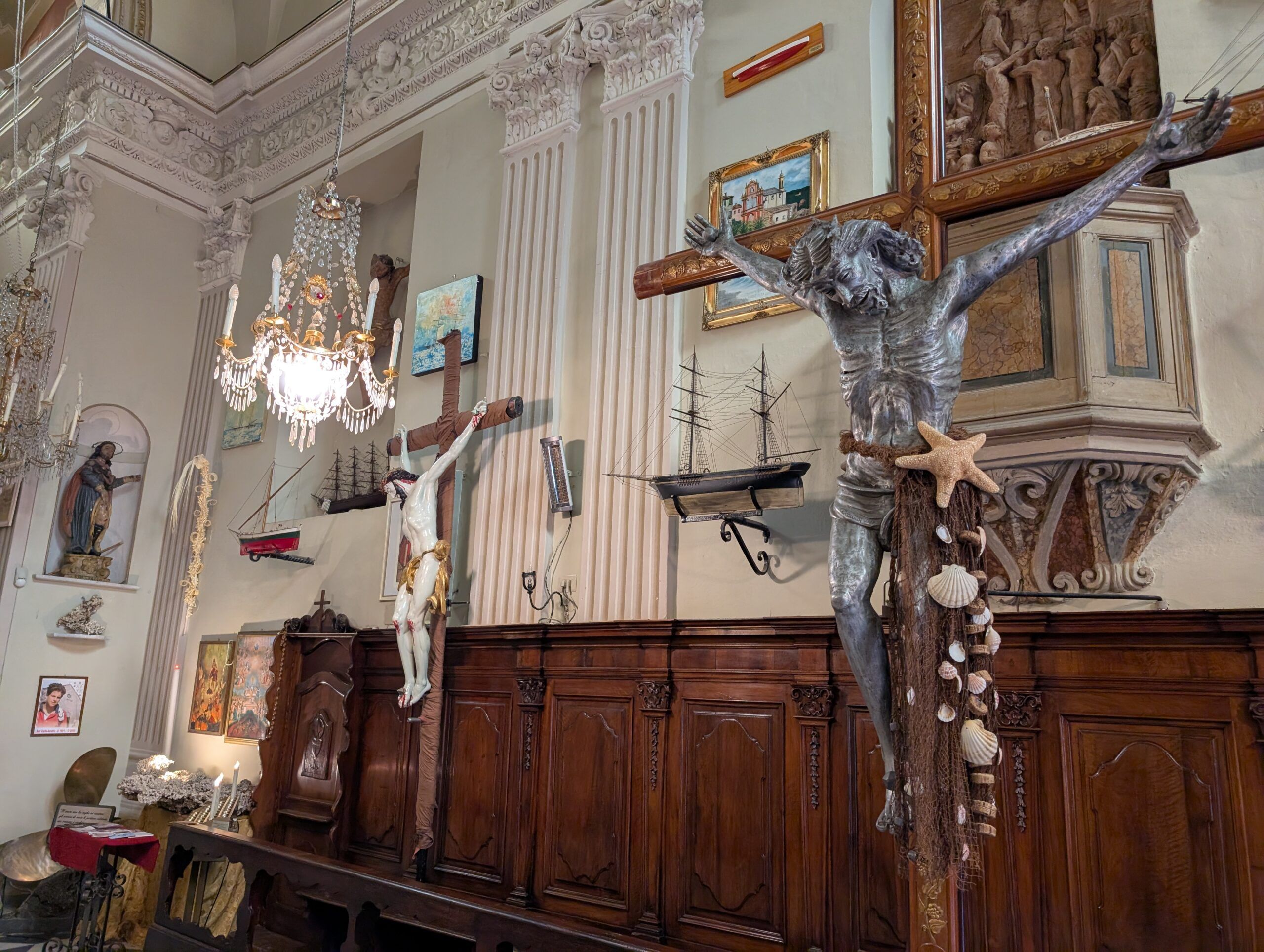
Exterior and Façade
Check out the oratory’s façade—it’s a classic example of Baroque style, with lines that pull your gaze up to the sky. Built in 1347 and modified over the centuries, it still keeps its old character.
Right in front, you’ll see a Ligurian “risseu” sagrato—a mosaic churchyard made of black and white pebbles, arranged in intricate patterns. This is a signature look for religious buildings in Liguria.
The exterior walls seem to carry the memory of all the sailors who came here over the generations.
Interior Decorations and Artworks
Inside, the oratory has a single nave with a long, Baroque layout. The space feels both cozy and grand—great for quiet moments or bigger gatherings.
From seaside villas to charming hotels, find your perfect Mediterranean retreat with breathtaking Ligurian Sea views.
Browse Accommodations Now
You’ll spot wooden ship models, hand-carved by sailors during long trips. They’re not just for show; they’re votive offerings, reminders of the oratory’s close ties to the sea.
Keep an eye out for pieces by Anton Maria Maragliano, a renowned Genoese sculptor. His wooden sculptures bring religious stories to life with incredible detail.
You’ll also find coral decorations throughout the church. For seafaring communities, coral is more than just pretty—it’s a symbol of safe returns and gratitude.
Religious and Social Activities
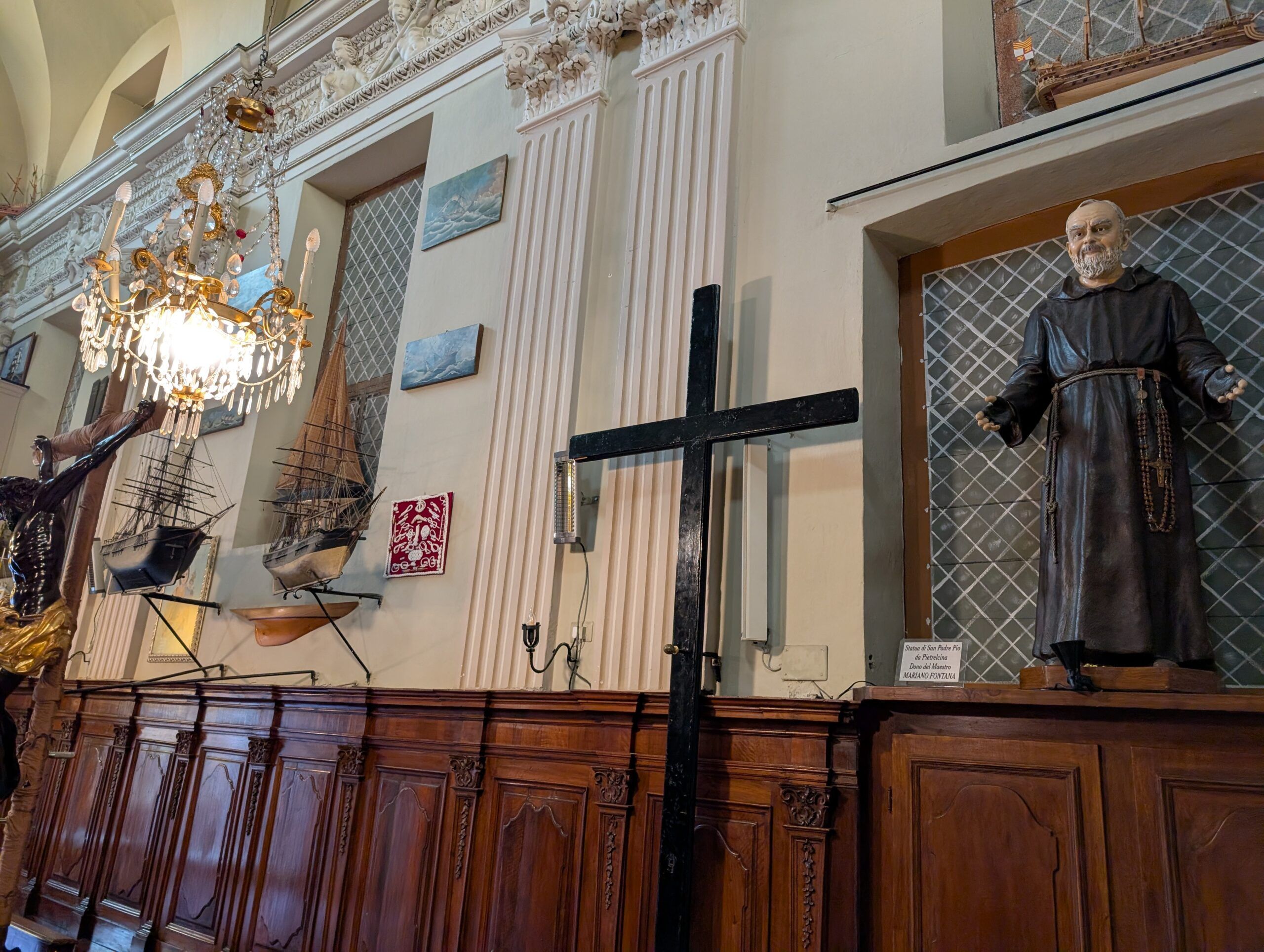
The Oratorio di Sant’Erasmo isn’t just a church. It’s a hub for community life, charity, and time-honored maritime traditions that have shaped Santa Margherita Ligure.
Confraternities and Brotherhoods
The Confraternita di Sant’Erasmo (Brotherhood of Saint Erasmus) has been around since 1347, started by fishermen and sailors from the Corte district.
They looked out for each other, especially the sick, the poor, and the families of lost mariners—long before modern social services were a thing.
If you visit, you might spot artifacts and old documents showing their charitable work. Later on, the group gained Arciconfraternita (Arch-brotherhood) status, connecting it with similar organizations across Italy.
Even now, members don traditional robes for processions and special events, keeping old traditions alive.
Patronal Festival and Sea Procession
The oratory’s biggest event is the annual feast day for Sant’Erasmo, patron of sailors. The celebration usually includes:
- A solemn Mass in the oratory
- Decorations all around the church and its surroundings
- Traditional maritime music and hymns
- Local food specialties from nearby stalls
The highlight? The sea procession. They carry a statue of Sant’Erasmo from the oratory to a decorated fishing boat, followed by a parade of smaller boats decked out with flags and flowers.
Watching the boats glide through the bay, with fishermen honoring their patron, is something special. It’s a tradition that connects today’s sailors with those who built the oratory centuries ago.
Nautical Traditions and Symbolism
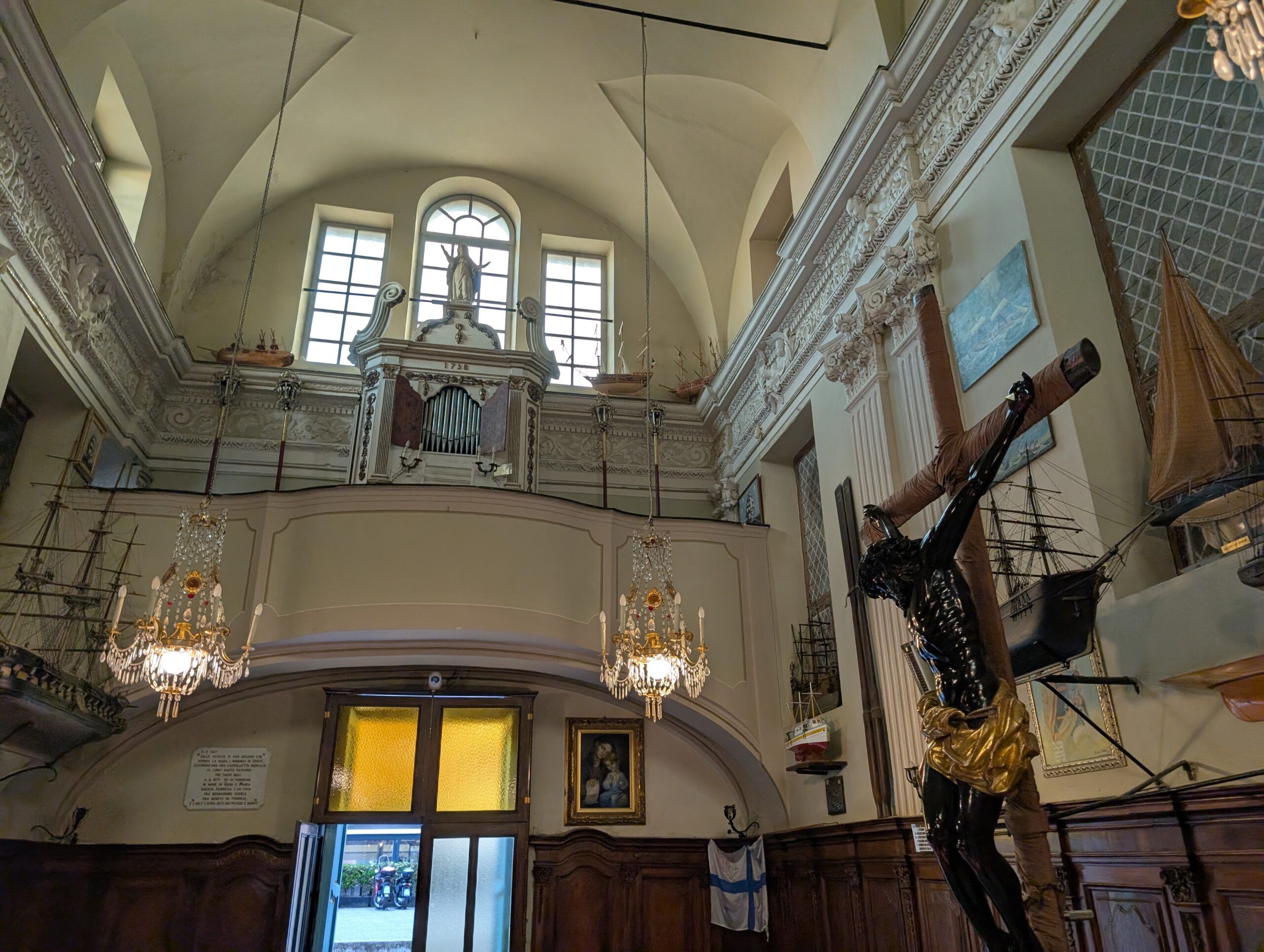
The Oratorio di Sant’Erasmo is steeped in the maritime heritage of Santa Margherita Ligure. The church feels like a living museum, packed with marine traditions that have shaped the town.
Sailor and Fishermen Heritage
For the “gente di mare” (sea people) of Santa Margherita Ligure, the oratory means a lot. Fishermen from the Corte neighborhood built it in 1347 and dedicated it to Sant’Erasmo (Saint Elmo), their protector. The original chapel sat right on the rocks, with the sea lapping at its walls.
During storms, sailors would come here to pray for safety. Many still keep this habit before heading out. You can even find biscotti del marinaio (sailor’s biscuits) being made locally, using recipes that go way back.
On June 2nd, the feast of Sant’Erasmo, fishing boats fill the bay for a special blessing.
Boatbuilders and Craftsmanship
The oratory also honors the “maestri d’ascia” (shipwrights) who built boats along this coast. These skilled artisans crafted everything from small fishing boats to larger vessels, passing down their know-how through generations.
You’ll see their handiwork in the wooden details inside the oratory. The altar, for instance, features marine motifs carved by local artisans who knew the sea inside out.
Sometimes, traditional boatbuilding tools go on display during special exhibits. There aren’t many old-school builders left, but the oratory keeps their memory alive with artifacts and old photos.
Elegant hotels, waterfront apartments, and vacation rentals with instant confirmation. Pastel-colored buildings and palm-lined promenades await!
See Available Properties
You’ll also spot “artigianato” (craftsmanship) tied to maritime life, like knot work and decorative pieces made from sea-found materials.
Marine-inspired Art and Models
One of the oratory’s most eye-catching features is the collection of ship models hanging from the ceiling. These “modellini di navi” represent ships that once sailed from Santa Margherita Ligure, made by sailors as thanks for surviving dangerous journeys.
On the walls, you’ll see paintings of dramatic sea rescues and ships battling storms—local artists painted these, often drawing on their own experiences at sea.
Look for the “modelli di velieri” (sailing ship models), each showing off a different type of vessel that worked the Ligurian Sea over the centuries. Some of these miniatures are so detailed, with tiny rigging and sails, you can’t help but stop and stare.
These artworks don’t just decorate the church—they help visitors get a feel for the maritime history that’s so much a part of this community.
Spiritual Symbolism and Figures
The Oratorio di Sant’Erasmo holds deep spiritual meaning for Santa Margherita Ligure’s fishing community. You’ll find maritime symbols and religious figures woven into the church’s history and traditions.

Sant’Elmo and Maritime Legends
Sant’Erasmo, or Sant’Elmo, was a bishop and martyr who died during the Diocletian persecutions in the late 3rd century. He’s the patron saint of sailors and navigators, offering protection to those who face the risks of the sea.
One of the most interesting things tied to Sant’Elmo is the “Fuochi di Sant’Elmo” (St. Elmo’s Fire). Sailors sometimes saw eerie blue lights on their ships’ masts during storms. It’s a natural electrical event, but to local fishermen, it felt like a sign of Sant’Elmo’s protection.
If you visit, you’ll spot maritime touches in the decorations—a nod to the connection between faith and the sea.
The oratorio itself, built in 1347 by fishermen, originally sat right by the water, sometimes taking the brunt of crashing waves during storms.
Local Art and Cultural Heritage
The Oratorio di Sant’Erasmo is home to artistic treasures that reflect Santa Margherita Ligure’s rich maritime history. Its baroque style highlights the town’s cultural role over the centuries.
Seasonal Events and Exhibits
At Christmas, you shouldn’t miss the traditional presepe (nativity scene) inside the oratory. Each year, the scene changes, always featuring local fishing traditions and maritime touches unique to the area.
The oratory often hosts temporary exhibits with works from local artists. You’ll see paintings of Sant’Erasmo and scenes from the town’s seafaring past.
For a deeper dive, check out the nearby Museo del Mare, where you’ll find vintage fishing gear, ship models, and old photographs.
On Saturdays during the summer, you can join special guided tours. These walks dig into the symbolism behind the oratory’s art and its ties to local maritime traditions.
The Oratory’s Place in Ligurian and Italian Culture
The Oratorio di Sant’Erasmo holds a special place in Ligurian culture, reflecting the region’s strong connection to the sea and religious life. This small chapel stands as a symbol of local history and the roots of coastal communities.
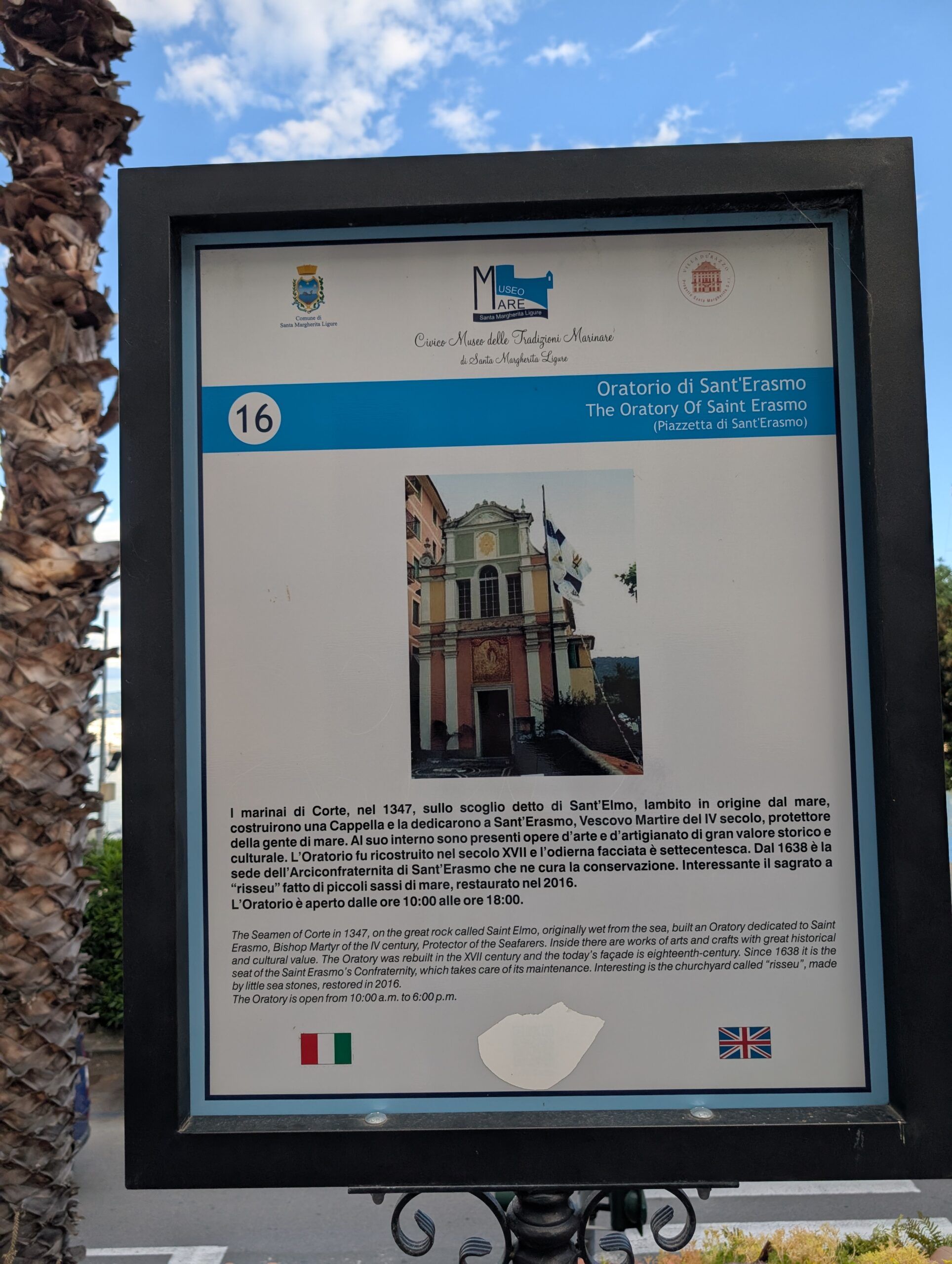
Santa Margherita Ligure and the Surrounding Region
Santa Margherita Ligure wraps the Oratorio di Sant’Erasmo into its everyday life—locals and visitors both seem to treat it as a bit of a landmark. If you wander through this coastal town, you’ll probably spot the oratory perched above the harbor, kind of tying the whole place together. It’s right in the heart of the Ligurian coast, postal code 16038, if you’re curious.
Travelers have ranked the oratory 7th out of 42 attractions in Santa Margherita, so clearly, it’s not just a religious site—it’s also a piece of the town’s architecture and culture that people genuinely appreciate.
Towns nearby, like Sori and others along the Ligurian coast, keep up similar maritime traditions. You’ll find a stretch of these coastal communities, each with their own religious buildings that honor the patron saints of seafarers. It’s a thread that runs right along the coastline.
Connection to Fishing and Coral Trade
The Oratorio di Sant’Erasmo has always been closely linked to the local fishing community. Travelers often mention in their reviews that it’s an “oratorio di gente di mare” (oratory of sea people), which really says a lot about its deep roots among folks who live off the sea.
From its spot overlooking Santa Margherita’s port, you get these gorgeous views that just drive home how much the oratory is part of maritime life. Sant’Erasmo, the patron saint of sailors, meant a lot here—especially when fishing shaped the local economy.
Coral fishing (pesca del corallo) once played a huge role along the Ligurian coast. Fishermen would gather at the oratory, hoping for protection before heading out on risky coral harvesting trips. That trade brought in money and left a mark on the region’s culture.
You can still pick out little tributes to this past in the oratory’s decorations, and honestly, the locals continue to treat the building with a kind of quiet reverence. It might look modest, but it clearly means something special around here.
Easy booking across stunning accommodations from historic palazzos to modern retreats. Pristine beaches and crystal waters just moments away!
Secure Your Italian Getaway

